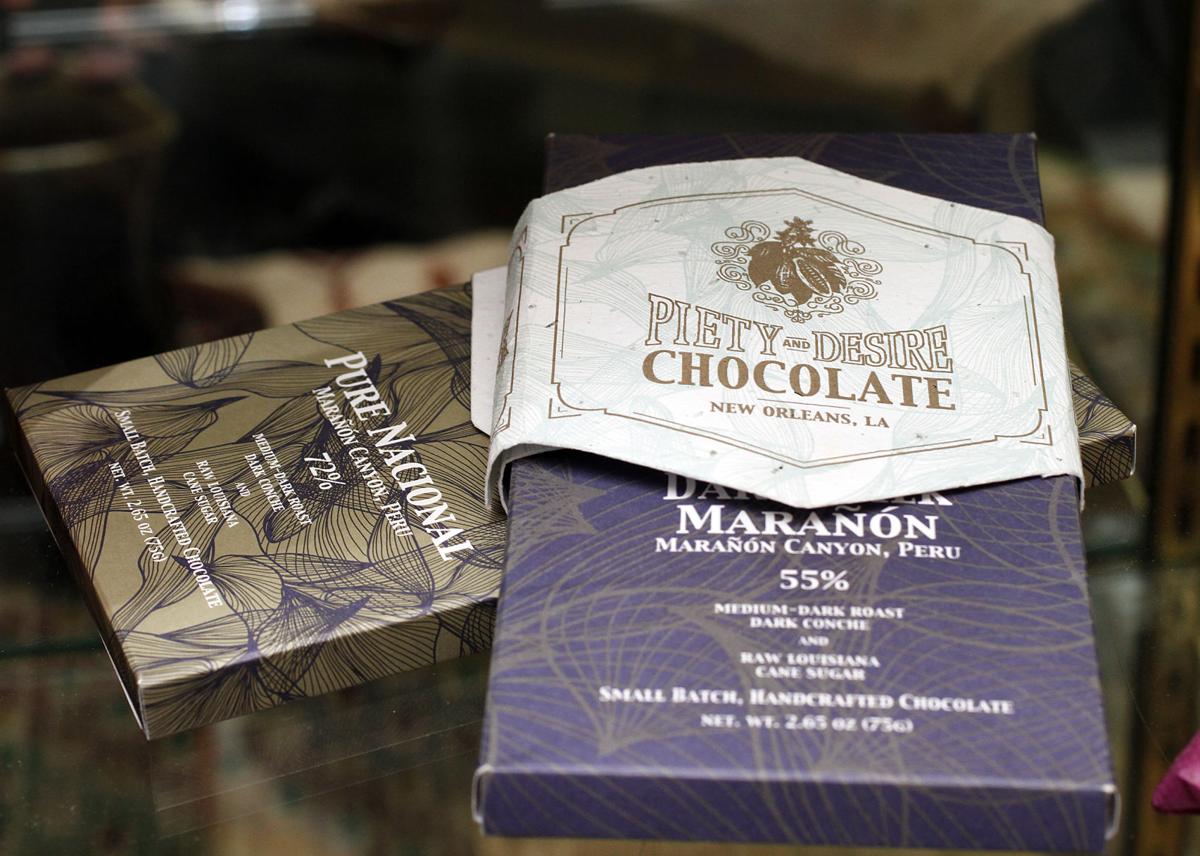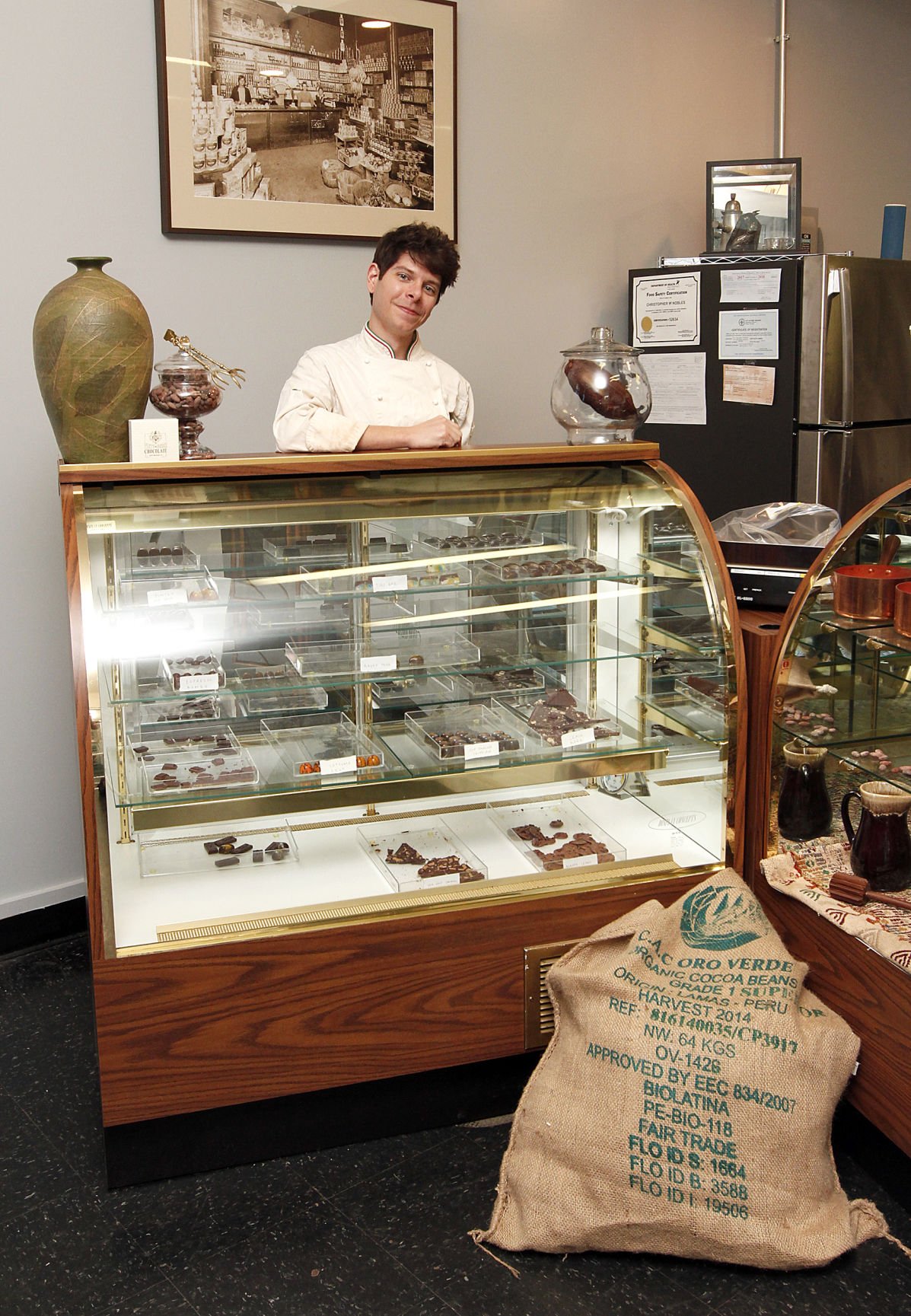
Introduction
Chocolate is a staple for U.S. children, whether they consume it in the form of chocolate milk at schools; receive chocolate gifts for birthdays, Easter, Christmas, Valentine’s Day, and Halloween; or whether they indulge in chocolate through impulse purchases and conscious consumption at restaurants. It can hardly come as a surprise that this consumption–which includes the ingestion of copious amounts of sugar within various forms of chocolate–has seen the same upward trend as many chronic illnesses now affecting children, including diabetes and obesity.
Children cannot be blamed for this uptrend. They are reliant on their parents to regulate their dietary consumption. Furthermore, they are seen as a valuable target audience for chocolate and confectionery makers, who create appealing targeted messages aimed to make children (and their parents) more receptive to consuming chocolate, establishing brand loyalty early on, and exacerbating the rise of the aforementioned chronic illnesses.
This analysis of the chocolate market and its ties to children will first give a general overview of the global and U.S. chocolate markets, looking specifically at the chocolate sales aimed at and purchased by children and teenagers. It will then examine the history of chocolate, the intertwined narrative of chocolate and sugar, the addictive qualities of sugar, and the intentional misdirection away from the negative impacts of sugar by the industry itself.
Setting the Stage: The History of Chocolate and Sugar
The History of Chocolate
Cacao, chocolate, and chocolate beverages were first consumed by the Olmecs as far back as 2,600 years ago, which was regarded to have aphrodisiac, spiritual, medicinal, and godly qualities. It was subsequently used by the Mayans and the Aztecs, with both preparing the beverage similarly, although the former consumed it hot, while the latter consumed it cold. This cacao was used for legal tender, an elite commodity (as a beverage), and rituals. It was also used in marriage discussions and fertility rituals [1].
For instance, the Aztecs held enormous storehouses of cacao beans, since they had to be transported 900 miles to the Aztecs cities, as the Mexican soil did not favor cacao tree growth. For a trader, one load of cacao was three xiquipillis, or 24,000 beans; the major courts, such as that of Netzahualcoyotl, had to be stocked with 4 xiquipillis daily, equivalent to 11,680,000 beans annually, or 486 loads [2].

Cacao was highly revered as a godly commodity. The foam itself was seen as the most sacred part of the drink [3] and was seen as an elixir for the soul. When depicted on ancient artifacts, it is often featured being consumed by the gods or depicts the royal bloodline of deities by portraying the deity blossoming forth among pods and flowers [4].
However, the chocolate produced and exalted in these Mesoamerican civilizations did not remain unchanged after the arrival of Columbus, nor is this ancient the most commonly consumed in contemporary America, especially among the young children in question, who would not be receptive to unsweetened, bitter chocolate.

According to The True History of Chocolate, some of the older ingredients Europeans began to substitute out were:
- “Ear flower”
- Chili pepper
These new ingredients included:
- Cinnamon
- Anise seed
- Black pepper
However, the largest change was the regular addition of cane sugar [5]. Before chocolate became the tantalizing treat of children’s dreams (and dieticians’ nightmares), it had to become intimately interwoven with sugar. Just like cacao, sugar has a complex narrative often full of deceit and exploitation.
The Human Toll of Sugar Production

Sugar was first produced in 500 C.E., with Hindu religious texts mentioning the boiling of molasses and crystallization. Before sugar was produced in the New World, it was grown in the Middle East. Sugar spread through conquest, trade, and travel, with Europe first having access to sugar in 700 C.E and having continued exposure during the Crusades. However, even after Middle Eastern sugar production slows when operations were moved to the New World, the sugar plantations were supposedly transplanted [6].
The warm, moist climate of the Caribbean, which facilitated cacao growth, also proved extremely favorable for sugar crops. Once the sugar cane is ready to harvest, it is collected, chopped, and then ground into a pulp. This pulp is then pressed, pounded, or soaked in liquid. Next, the liquid is heated, which causes it to evaporate and concentrate into sugar crystals. The video below demonstrates the complexity of creating sugar even the available modern technology [7]. For production in the 1800s, the process was much more difficult.
Because of the labor-intense process required to produce sugar, sugar company owners turned to slaves to reduce costs. Overall, 12.5 million abducted Africans were shipped to the New World, of which 10.7 million survived the Middle Passage; in other words, 14.4% of kidnapped people died. Once there, 95% were sent to Brazil and the Caribbean, with only 5% being sent to the present-day U.S. In the Caribbean from 1701 to 1810, Barbados had 252,500 and Jamaica has 662,400 African slaves [8].

Corruption Continues: Sugar Lies in the 1960s

“They were able to derail the discussion about sugar for decades.”
Stanton Glantz, professor of medicine at U.C.S.F. and an author of JAMA Internal Medicine
The deceit around sugar continued into the 1900s, where the sugar industry used its immense power to prioritize profit over health, a trend seen by many confectionery companies and other large corporations that purposefully target children without any regard for their health. During the 1960s, and for the next five decades, the sugar industry paid scientists to shift the blame for the rising trend in obesity rate onto fat [9].

The trade group called the Sugar Research Foundation paid 3 Harvard scientists to “minimize the link between sugar and heart health and cast aspersions on the role of saturated fat” [10].
However, this was not an isolated incident, with Coca-Cola also having bribed researchers with millions in 2015 to have them downplay the connection between sugary drinks and obesity. Moreover, more directly connected to chocolate makers, in June 2016, The Associated Press reported that candy makers were also funding biased reports to claim that children that who ate candy weight less than those who did not [11].
As these cases show, these large sugar and candy industries are not interested in the well-being of American children; in fact, they are perfectly willing to fabricate lies that directly impact children and their health to generate revenue. In the case of the candy makers, their corruption of scientific research is especially concerning because it prevents parents from making informed decisions for their children’s health, and it demonstrates that any targeted action toward children, especially regarding food advertising, should be viewed with scrutiny.
Before examining the role of marketing to children and the harmful impact of advertising on youth, a brief overview of the chocolate market is necessary.
Overview: Global and U.S. Chocolate Markets
Global Markets
Globally, 300 million people consumed 7.3 billion tons of retail chocolate confectionery annually during 2015-2016, with it expected to reach 7.7 million tons by 2018-2019 [12]. This comes out to around 12 pounds per person [13]. These global sales of chocolate reached $98.2 billion USD during the same years, with the U.S. comprising the largest percentage [14]. However, these numbers only portray a minuscule portion of the narrative for the contemporary chocolate market. The average omits the unequal distribution of both producers and consumers; ignores the nuanced intersections with race, class, gender, age, and sexuality that impact target audiences and their consumption; and obscures the immense power disparities between the poorest cacao farmers and the most profitable chocolate corporations.
This enormous industry is incredibly homogeneous; for instance, only 3 companies make up 99.4% of snack-sized candy on the market [15]:

U.S. Markets
The U.S. makes up the largest portion of the industry, with 4 of the top 10 global confectionery companies by net sales value originating in the U.S [16] :
- Mars Wrigley Confectionery, division of Mars Inc (USA) – $18,000
- Mondelēz International (USA) – $12,390
- Hershey Co (USA) – $7,779
- Kellogg Co (USA) – $1,890
Overall, the U.S. market in 2015 amounted to approximately $18.3 billion USD in global of the total global sales of $98.2 billion [17], meaning the U.S. market accounts for 18.6% of the global market.
Marketing to Children

Children are a valuable market for advertisers, especially in industries that directly appeal to children and teenagers, such as toys, clothing, license and merchandise, and of course, food. Marketing to kids is a large, profitable business, with $17 billion spent annually on advertisements specifically targeting them (up from $100 million in 1983). Likewise, children under 14 spend approximately 40 billion annually and teenagers spend $159 billion, with children overall influencing $500 billion in purchases yearly [18].
These children spend their lives constantly bombarded with branding, holding 145 brand conversations a week; witnessing more than 25,000 ads a year just on television from the ages of 2-11; and consuming ads via the Internet, cell phones, video games, and even in school [19]. With such a constant stream of advertising, chocolate makers stand to make generous profits from children, even at the expense of their health.
Federal Trade Commission Regulations on Advertising to Children
Under the Advertising and Promotion Law 1997, Minnesota Institute of Legal Education, the Deception and Unfairness Authority, under Section 5 of the FTC Act, prohibits unfair and deceptive acts in commerce, as set by their Deception Policy Statement. They identify deceptive advertising toward children as:
“An interpretation that might not be reasonable for an adult may well be reasonable from the perspective of a child. Claims tend to be taken literally by young children” [20].
Starek, III, Roscoe B. “The ABCs at the FTC: Marketing and Advertising to Children.” Federal Trade Commission, July 18, 2013.
They clearly consider the more limited ability of children to “detect exaggerated or untrue statements,” which may have been used in ads to further promote sales. Of course, teenagers have a much easier time discerning between truth and exaggeration in advertisements, but they can also still be reasonably misled by advertising, especially in a field as dynamic and unstable as nutrition.
The FTC includes a special page dedicated to addressing food marketing to children and adolescents, especially since irresponsible advertising would only serve to exacerbate the increasing obesity and chronic illness rates in the U.S. However, the FTC did note that: “responsible marketing can play a positive role in improving children’s diets and physical activity level” [21]. Perhaps chocolate companies, especially since many have been making public commitments to provide ethically sourced, sustainable chocolate, can also make a similar commitment to responsible marketing toward youth.

The Negative Effects of Advertising on Children and Adolescents
As advertising in media (and to children) evolves, the line between entertainment and advertising blurs (ex. The production and entertainment value of Super Bowl commercials). This line, already more ambiguous for younger children and teens, becomes harder and harder to differentiate, and with that, the impact of advertising on children should be carefully examined. How much is too much? Where does it fall into exploitation? How do large chocolate corporations appeal to one of their target demographics–children–ahead of their competition without falling into manipulation? Besides carefully following the FTC’s regulations, the psychological and behavioral impact of marketing to children should be clearly understand by both the government and chocolate companies, and clearer regulations for what is or is not acceptable should be drafted to manage chocolate and other food companies.
For instance, some of the themes conveyed in ads toward children can influence poor behavior in children. Just as advertisers seek children for marketing because they are malleable and are still developing their life-long preferences and tastes [22], children can be exposed to detrimental themes such as unhealthy food brand preferences, tobacco, etc. Likewise, children, particularly girls (although it also affects boys) may be harmed or have negative body/self esteem issues exacerbated by harmful marketing [23].
Children under 7 are especially vulnerable because, according to Piaget, they are not able to detect “persuasive intent,” meaning they are much easier to fool and manipulate [24]. Likewise, although there are calls to educate children about advertising to help them protect themselves from malicious ads, but current efforts may not be effective; in fact, some studies have shown that the <7 may be much higher, with “children…not capable of understanding the ‘commercial intent’ of advertising until they reach the age of 12” [25].
Example of Rejected Chocolate Advertising
Kinder Egg Websites

In the UK, several Kinder egg websites (a subsidiary of Ferraro) promoting Kinder toys and eggs have been banned for promoting junk food advertising toward children. Some, like Kindernauts, had activity pages and child-friendly crafting activities, while others, like magic.kinder/en, have Kinder-themed video games for children aged 3+. In the UK, these violate their Committee of Advertising Practice rules of not promoting food with high fat, salt, or sugar for youth [26].
Endnotes
- [1] Martin, Carla D. “Mesoamerica and the ‘Food of the Gods.’”
- [2] Coe, Sophie D., and Michael D. Coe. The True History of Chocolate.
- [3] Martin, Carla D. “Mesoamerica and the ‘Food of the Gods.’”
- [4] ibid.
- [5] Coe, Sophie D., and Michael D. Coe. The True History of Chocolate.
- [6] Mintz, Sidney W. Sweetness and Power: The Place of Sugar in Modern History.
- [7] Discovery UK. SUGAR | How It’s Made.
- [8] Eltison and Richardson, “Trans-Atlantic Slave Trade Database.”
- [9] O’Connor, Anahad. “How the Sugar Industry Shifted Blame to Fat.”
- [10] ibid.
- [11] ibid.
- [12] “Consumption of Chocolate Worldwide, 2012/13-2018/19.” Statista.
- [13] Martin, Carla D. “The Rise of Big Chocolate and the Race for the Global Market.”
- [14] “Chocolate Retail Sales Worldwide 2016.” Statista.
- [15] Martin, Carla D. “The Rise of Big Chocolate and the Race for the Global Market.”
- [16] “The Chocolate Industry.” International Cocoa Organization.
- [17] “Chocolate Market Retail Sales Worldwide by Country, 2015.” Statista.
- [18] Martin, Carla D. “Race, Ethnicity, Gender, and Class in Chocolate Advertisements.”
- [19] ibid.
- [20] Starek, III, Roscoe B. “The ABCs at the FTC: Marketing and Advertising to Children.” Federal Trade Commission.
- [21] “Food Marketing to Children and Adolescents.” Federal Trade Commission.
- [22] “Marketing and Advertising to Children.” ICC – International Chamber of Commerce.
- [23] Lapierre, Matthew A., Frances Fleming-Milici, Esther Rozendaal, Anna R. McAlister, and Jessica Castonguay. “The Effect of Advertising on Children and Adolescents.”
- [24] ibid.
- [25] Watson, Bruce. “The Tricky Business of Advertising to Children.”
- [26] Smithers, Rebecca. “Websites of Kinder Chocolate Banned over Ads Targeting Children.”
Works Cited
- Avena, Nicole M., Kristin A. Long, and Bartley G. Hoebel. “Sugar-Dependent Rats Show Enhanced Responding for Sugar after Abstinence: Evidence of a Sugar Deprivation Effect.” Physiology & Behavior 84, no. 3 (March 16, 2005): 359–62. https://doi.org/10.1016/j.physbeh.2004.12.016.
- Avena, Nicole M., Pedro Rada, and Bartley G. Hoebel. “Evidence for Sugar Addiction: Behavioral and Neurochemical Effects of Intermittent, Excessive Sugar Intake.” Neuroscience and Biobehavioral Reviews 32, no. 1 (2008): 20–39. https://doi.org/10.1016/j.neubiorev.2007.04.019.
- “Chocolate Market Retail Sales Worldwide by Country, 2015.” Statista, November 2015. https://www.statista.com/statistics/569637/global-retail-sales-chocolate-confectionery-by-country/.
- “Chocolate Retail Sales Worldwide 2016.” Statista, November 2015. https://www.statista.com/statistics/569521/chocolate-retail-sales-worldwide/.
- Coe, Sophie D., and Michael D. Coe. The True History of Chocolate. 3rd ed. Thames & Hudson, 2013.
- “Consumption of Chocolate Worldwide, 2012/13-2018/19.” Statista, November 2015. https://www.statista.com/statistics/238849/global-chocolate-consumption/.
- Discovery UK. SUGAR | How It’s Made, 2018. https://www.youtube.com/watch?v=jCKt02NGjfM&t=29s.
- “Food Marketing to Children and Adolescents.” Federal Trade Commission, April 7, 2014. https://www.ftc.gov/food-marketing-to-children-and-adolescents.
- Lapierre, Matthew A., Frances Fleming-Milici, Esther Rozendaal, Anna R. McAlister, and Jessica Castonguay. “The Effect of Advertising on Children and Adolescents.” Pediatrics 140, no. Supplement 2 (November 1, 2017): S152–56. https://doi.org/10.1542/peds.2016-1758V.
- “Marketing and Advertising to Children.” ICC – International Chamber of Commerce. Accessed May 17, 2019. https://iccwbo.org/global-issues-trends/responsible-business/marketing-advertising/marketing-and-advertising-to-children/.
- Martin, Carla D. “Mesoamerica and the ‘Food of the Gods.’” Harvard University: Cambridge, MA. February 20, 2019. Lecture.
———. “Race, Ethnicity, Gender, and Class in Chocolate Advertisements.” Harvard University: Cambridge, MA. April 3, 2019. Lecture.
———. “The Rise of Big Chocolate and the Race for the Global Market.” Harvard University: Cambridge, MA. March 13, 2019. Lecture. - Mintz, Sidney W. Sweetness and Power: The Place of Sugar in Modern History. Reprint edition. New York: Penguin Books, 1986.
- “Nesquik Banned from Describing Hot Chocolate as a ‘Great Start to the Day.’” Accessed May 17, 2019. https://www.campaignlive.co.uk/article/nesquik-banned-describing-hot-chocolate-great-start-day/1377772?utm_source=website&utm_medium=social.
- O’Connor, Anahad. “How the Sugar Industry Shifted Blame to Fat.” The New York Times, December 21, 2017, sec. Well. https://www.nytimes.com/2016/09/13/well/eat/how-the-sugar-industry-shifted-blame-to-fat.html.
- Smithers, Rebecca. “Websites of Kinder Chocolate Banned over Ads Targeting Children.” The Guardian, September 18, 2018, sec. Media. https://www.theguardian.com/media/2018/sep/19/websites-of-kinder-chocolate-banned-over-ads-targeting-children.
- Starek, III, Roscoe B. “The ABCs at the FTC: Marketing and Advertising to Children.” Federal Trade Commission, July 18, 2013. https://www.ftc.gov/public-statements/1997/07/abcs-ftc-marketing-and-advertising-children.
- “The Chocolate Industry.” International Cocoa Organization, February 1, 2019. https://www.icco.org/about-cocoa/chocolate-industry.html.
Watson, Bruce. “The Tricky Business of Advertising to Children.” The Guardian, February 24, 2014, sec. Guardian Sustainable Business. https://www.theguardian.com/sustainable-business/advertising-to-child
ren-tricky-business-subway.
Multimedia Cited
- Child Eating Large Chocolate Bar. September 21, 2018. Chocolate Medication Helping Sick Children. https://98five.com/wp-content/uploads/2018/09/89792516.jpg.
- Xochipilli. Accessed May 17, 2019. https://upload.wikimedia.org/wikipedia/commons/6/6b/Xochipilli_1.jpg.
- My own graph produced from “Halloween Candy Breakdown for Fun Size Chocolates. n.d. Food & Water Watch.”
- Radunovic, Luka. Little Girl Reaching for Sugary Cereal. July 24, 2014. Kids And Advertising: (Ab)using The Most Vulnerable Target Group. https://encrypted-tbn0.gstatic.com/images?q=tbn:ANd9GcTB8jY7tTCi4A0SQvRoRqPtfX4NnHk3oZtt5u6lk3rjpEUINXDj2A.
- The Bitter History of Sugar. Madras Courier. Accessed May 17, 2019. http://www.latinamericanstudies.org/slavery/slavery-1823.jpg.
- Discovery UK. SUGAR | How It’s Made. https://www.youtube.com/watch?v=jCKt02NGjfM&t=29s
- Headliners for Sugar Conspiracy. Accessed May 17, 2019. https://cdn-a.william-reed.com/var/wrbm_gb_food_pharma/storage/images/5/1/7/1/2581715-1-eng-GB/Sugar-review-Rewriting-history-to-expose-a-non-existent-conspiracy_wrbm_large.jpg.
- Detailed Triangle Trade. National Park Service. Accessed May 17, 2019. https://www.nps.gov/articles/images/800px-Detailed_Triangle_Trade_1.jpg?maxwidth=1200&autorotate=false.
- Bold, Ben. Nesquik Banned Ad – “Great Start to the Day.” December 23, 2015. Campaign. https://cached.imagescaler.hbpl.co.uk/resize/scaleWidth/743/cached.offlinehbpl.hbpl.co.uk/news/OMC/Nesquik2-20151222025048285.jpg.
- Kinder Eggs. Metro. Accessed May 17, 2019. https://www.google.com/search?q=kinder+eggs&safe=active&rlz=1C1CHBF_enUS751US849&source=lnms&tbm=isch&sa=X&ved=0ahUKEwiY-ZvqlaLiAhVNTd8KHbhbCIEQ_AUIDygC&biw=681&bih=642#imgrc=K7s9_rxa5NRPyM:


















































You must be logged in to post a comment.